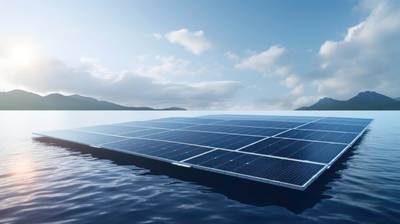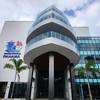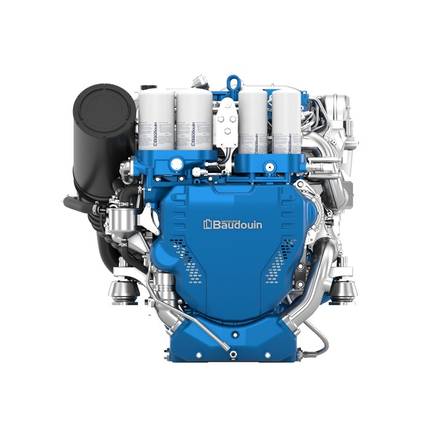Philippine Fishermen Fear Floating Solar Farm Could Sink Their Livelihoods
Fishing has been a lifeline for Alejandro Alcones for the past four decades, but he now fears his small boat may be replaced by a floating solar farm on the Philippines' largest lake.
Alcones is part of a group of fishermen opposed to the government's plan to place solar panels atop Laguna de Bay, one of the country's biggest sources of freshwater fish, as it looks for renewable energy sources to meet growing demand for power.
"Laguna Lake gives life and income to fishermen like us who didn't finish school. It also gives many displaced workers here an alternative way to earn by fishing," said Alcones, a 55-year-old father of two who lives near the lake.
An archipelago of more than 7,000 islands, the Philippines is hampered by limited land resources as it pursues a target to produce half of its electricity from renewable sources by 2040, compared with just a fifth in 2021.
Unlike traditional solar farms on land, floating photovoltaics - or solar panels installed on reservoirs, ponds and offshore waters - are an attractive alternative for fossil fuel-dependent countries with scarce land and high population density.
Last year, Indonesia opened Southeast Asia's largest floating solar facility on a man-made reservoir.
But these novel projects may compete with people who depend on fishing and agriculture, according to a January report by the Responsible Energy Initiative of Forum for the Future, a collective of nongovernmental organisations pushing for "ecologically safe and socially just" renewable energy.
The report described the Laguna Lake project as a "testing ground" for the technology and the world's first large-scale photovoltaics operation on a natural lake.
Potential hazards
Under the project, Laguna Lake, which spans 91,000 hectares southeast of Manila, will host three floating solar projects atop 2,000 hectares of water that will generate about 2 gigawatts of electricity to supply the Laguna area and the capital by 2026.
Contracts have already been awarded to three companies that must still undergo an environmental impact assessment before construction can start.
Alcones is one of the 13,000 people who depend on the lake for their livelihoods, according to the Laguna Lake Development Authority (LLDA), a state agency responsible for the preservation, development and sustainability of the area.
The LLDA regularly meets with fisher groups to hear their concerns and the government "doesn't want to dislocate them as much as possible" when the solar project gets underway, said Mhai Dizon, the LLDA's renewable energy project coordinator.
But the Philippines' largest fishermen's alliance, the National Federation of Small Fisherfolk Organizations in the Philippines, or Pamalakaya, accused the LLDA of only consulting local government officials and small groups of Laguna fishermen.
Following a request by Pamalakaya, it met with the LLDA in Manila in July, when it raised concerns that the Laguna solar project could impact more than 8,000 fishermen, including 2,000 people who work in aquaculture, according to Ronnel Arambulo, Pamalakaya's vice chairperson.
"We are worried that the floating solar farms will further shrink our fishing grounds that have already been reduced by past development projects," Arambulo told The Thomson Reuters Foundation outside of the meeting, which was closed to press.
Fishermen from Pamalakaya fear the project would reduce catches and pose hazards to communities if they become untethered during strong typhoons and rising water levels, Arambulo said. The panels could also impede boats and destroy docks, he said.
Waterborne solar panels are still being tested and raise "numerous questions" about potential long-term effects on the environment and local communities, according to the Responsible Energy Initiative report.
Coastal soil erosion, increased sedimentation and siltation, disruption of photosynthesis and diminished fishing yields as the ecosystem changes are among potential risks.
"Depending on their specific location and scale, floating solar can reduce access to fishing grounds by independent fishermen," said Marvin Lagonera, Forum for the Future's energy transition strategist in Southeast Asia.
He described a "a rights-based approach" in clean energy transitions as essential.
"This includes meaningfully engaging with impacted communities," including civil society, environmental groups and local communities, he said.
Race for renewables
The Laguna Lake project would generate enough electricity to supply 2 million homes, Mylene Capongcol, assistant secretary at the Department of Energy, said in a statement.
"The Department of Energy supports the development of floating solar projects as this will contribute to the government's target of a 35% renewable energy share in the power generation mix by 2030 and 50% by 2040," she said.
Transitioning to renewable energy is becoming ever more urgent for the Philippines.
It is now Southeast Asia's most coal-dependent country, with about 62% of its electricity production fired by the dirty fossil fuel last year, according to a report from the energy think tank Ember.
The slow adoption of clean energy is due in part to competition with agriculture for space, with just 18% of the island nation's total land deemed arable.
But floating solar panels can help defuse tensions over land rights that have plagued solar development elsewhere, research firm Rystad Energy said in a report.
At present, floating solar farms account for just 500 megawatts of power production across Southeast Asia, but another 300 MW would come online this year alone, it estimated.
"Countries such as the Philippines, Indonesia and Thailand are well-positioned to be at the forefront of this growing trend," the report said, and pointed to the Philippines' inland lakes as suitable for solar farms.
Lagonera also saw the technology as a chance for the Philippines to accelerate its shift to green energy.
"With the Philippines' ambitious renewable energy targets, floating solar systems present an innovative alternative and opportunity to scale renewable energy," he said.
"However, as floating solar scales, it also risks similar competition for limited resources."
Three dozen towns whose inhabitants depend on the lake for food, water and income line Laguna's shores.
Each year, fishermen haul up to 90,000 tonnes of fish, including mudfish, catfish and ayungin, a silver perch endemic to the Philippines, from its waters.
They are also among the poorest: Almost a third of all Filipino fishers live below the poverty line. Alcones earns an average 5,000 Philippine pesos ($87) a month.
He has already seen a decline in the quantity and variety of fish and blames stresses on Laguna arising from its use as a flood reservoir and waste sink, as well as for irrigation and hydropower.
The LLDA believes the floating solar farms could actually boost Laguna fisheries in the future.
"Based on studies … the bottom of the panels can be used as breeding ground for fishes," Dizon said.
While some Laguna fishers have welcomed the solar project, others believe they have more to lose than gain.
"We recognise the energy transition or the shift to renewables. But this should be put up in areas that are no longer productive, unlike Laguna Lake," Arambulo said.
($1 = 57.2600 Philippine pesos)
(Reuters - Reporting by Mariejo Ramos; Editing by Ayla Jean Yackley. The Thomson Reuters Foundation is the charitable arm of Thomson Reuters)















